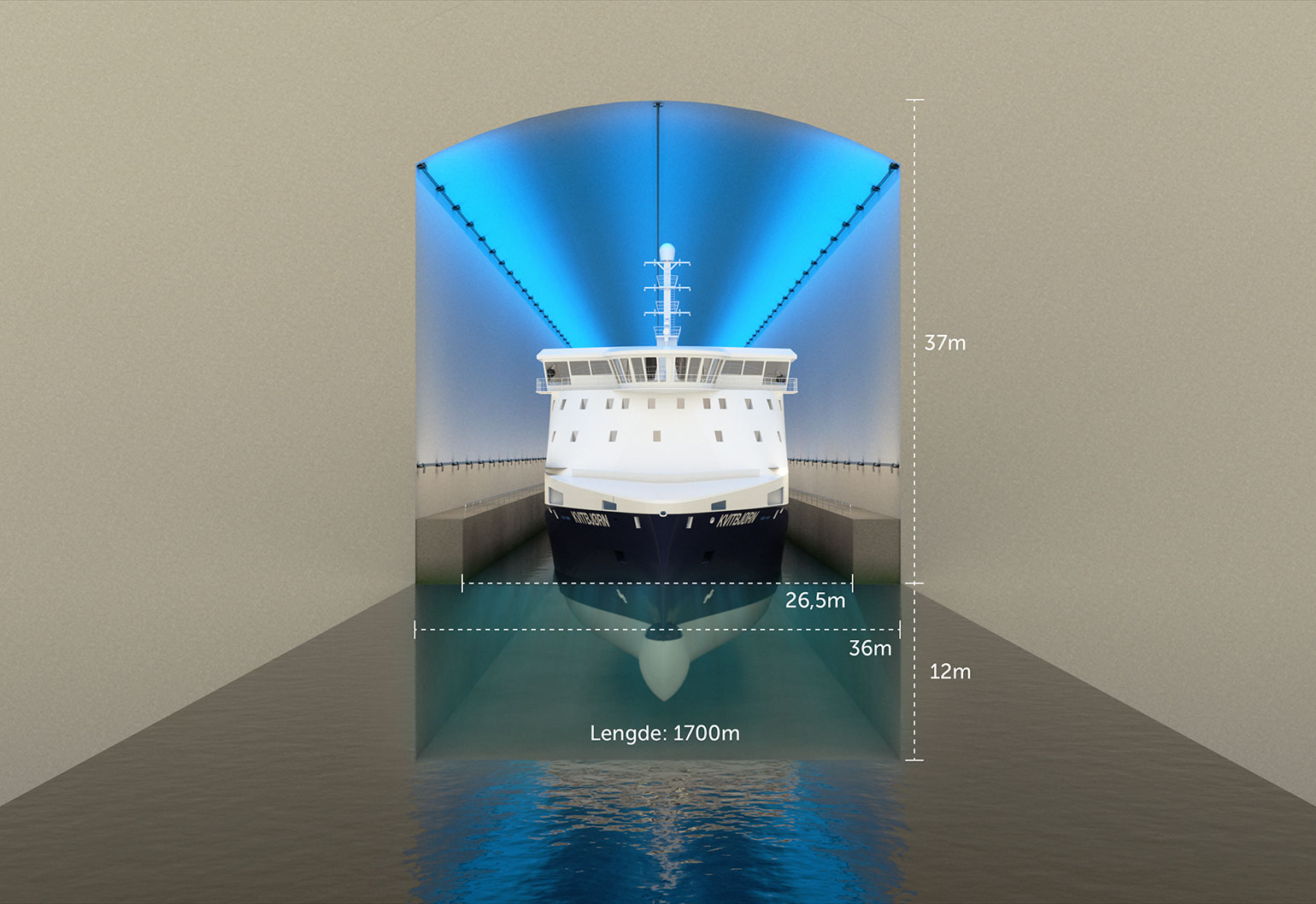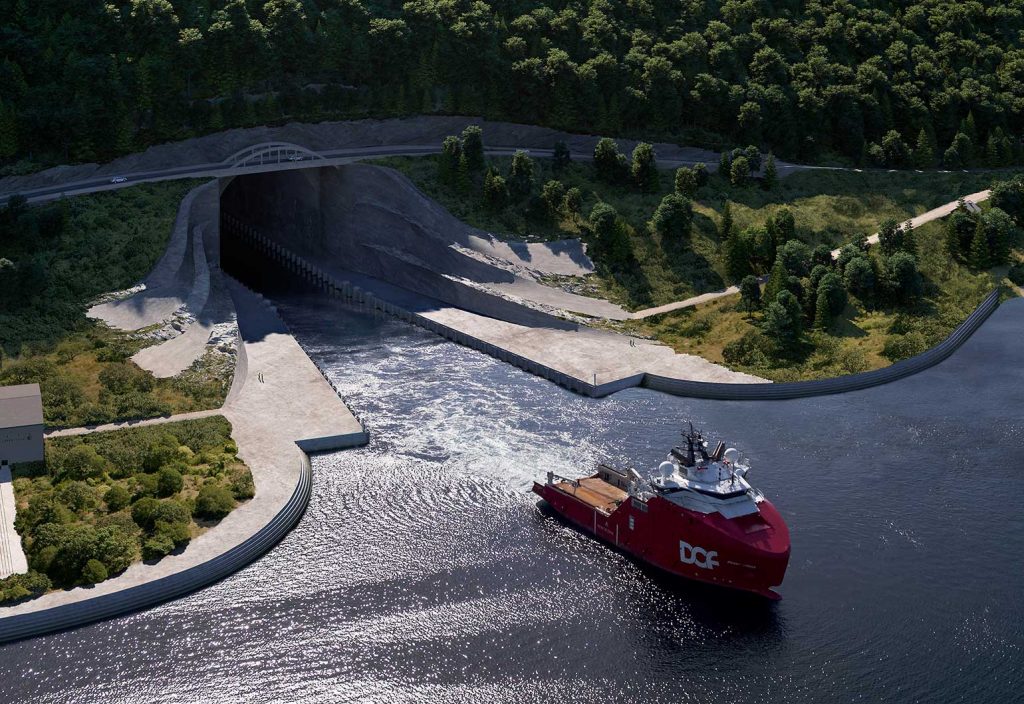Boring through a 300-metre-high mountain, a new tunnel will allow ships to navigate more safely through a dangerously exposed part of the Stadhavet Sea.
Construction of the world’s first full-scale shipping tunnel in western Norway will get underway next year, following government approval of the project.
The Stad Ship Tunnel will be 1.7 km long, 37 m tall, 36 m wide and 12 m deep, and offer safe voyage to commercial and recreational vessels of up to up to 16,000 t though a notoriously dangerous ocean corridor.
Since the end of World War II there have been 33 deaths in maritime accidents in the Stadhavet Sea, which is infamous for its challenging ocean currents and unpredictable tides and winds. High waves buffet vessels from different directions and can cause chaos for shipping traffic, even on days with little wind. One shipping company claimed about 20 per cent of vessels are delayed at Stad because of the conditions.
Terje Andreassen, Project Manager for the Stad ship tunnel-project for Kystverket, the Norwegian Coastal Administration, told create that the approval comes after undertaking several feasibility studies.
“What is unique about this project, is that it is the first tunnel for ocean going vessels to sail through,” he said. “This hasn’t been done before — the closest is some tunnels for small vessels and narrow boats in England and France.”

Construction is expected to begin in 2022, and if the project goes to plan it will open in 2025 or 2026.
“The tunnel goes through the mountain between two fjords, and the mountain above the tunnel is approximately 300 metres high,” Andreassen added.
“This means that the rock pressure inside the mountain is significant. It’s a huge job just to do the safety work and ensure that stone doesn’t fall as we start drilling.”
Excavation will take place through a drilling and blasting method, like an open mine, as the mountain is formed with gneiss, a very hard metamorphic rock.
“We start at the top of the tunnel, and take off the roof with a traditional horizontal drill and blast,” Andreassen said.
“Once we take the first level and can do the safety work with anchor bolts and shotcrete, we start drilling and blasting vertically like open mining. We do this for several levels, from the roof to 10 metres below the sea surface.”
Sections of rock will be left at both ends of the tunnel during construction to allow the team to work in dry conditions. When work is done, they will blast the remaining rock on both sides and allow water to come through. If the rock isn’t dense enough, Andreassen said they will create cofferdams, however it’s possible this won’t be necessary.
Extraordinary conditions
Roads are poor in the mountainous region, meaning engineers will have to transport heavy vehicles needed for the construction by sea.
There are also environmental conditions to take into consideration. Wind and water currents could drive floating weeds, sea grasses and pollution into the tunnel, where they could become trapped and decompose.
“If you unload a barge in the sea, you get dust and pollution that could affect marine life. We put a curtain system in water, where water can pass through, but not debris,” Andreassen said.
As for the rock that will be extracted to make the tunnel, it will be transported to the local area to be used in concrete for construction.
“It is a very steep landscape, and there is a lack of infrastructure for industry,” he said. “Additional amounts of rock may be deposited in a deep water reservoir if they cannot be used.”
Andreassen said he isn’t concerned that the tunnel risks an accident like that in the Suez Canal recently, when a cargo ship became wedged against the shoreline.
“The tunnel will be very well regulated,” he said. “Vessels will be allowed through for one hour in each direction. Around 100 vessels per day will be allowed through, and it will be managed by the Norwegian sea vessel controlling system. Leisure crafts will be allowed through two times per day in both directions.”
Shipping by design
Architecture firm Snøhetta was commissioned to design the entrances for the Stad tunnel.
“The design of the tunnel entrances focuses on merging the surrounding natural and cultural landscape with the tunnel’s large scale,” the firm said.
“Stone walls are brought into the design of the entrances, creating slightly sloping terraces. The terraces are built on stone carved out of the mountain where the tunnel is created.
“Using wire-cutting and blasting, the terraces will have a naturally rough form within the precise geometry of the horizontal lines. In addition to creating a link to the area’s cultural landscape, the geometry is also highly beneficial for the structural stability of the portal.”
In addition to providing a safer shipping route, the tunnel is also expected to become a popular tourist attraction, with ideas such as an overhead bridge open to the public being mooted to continue development of the area.
